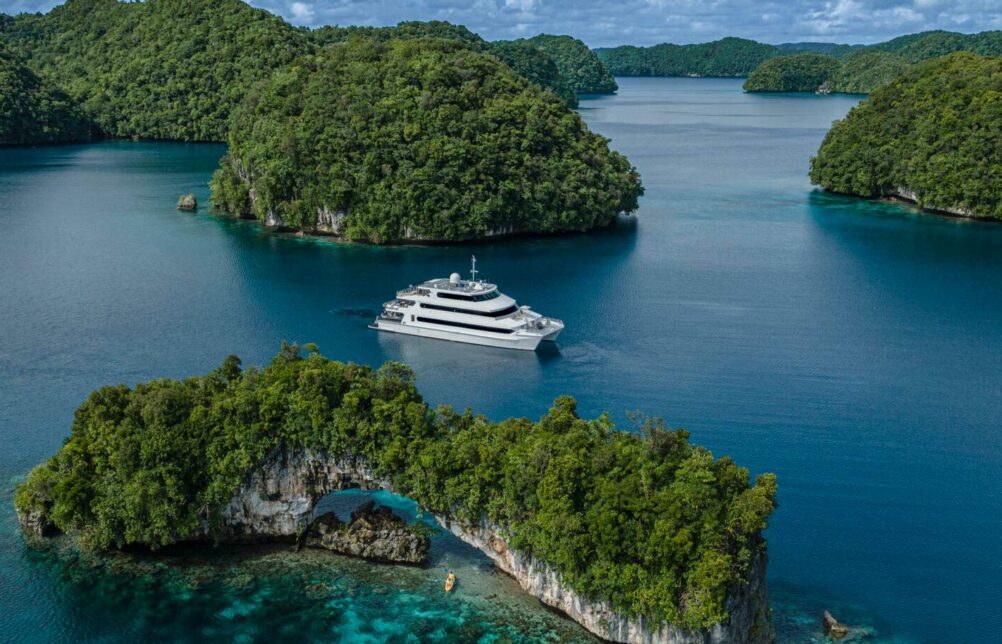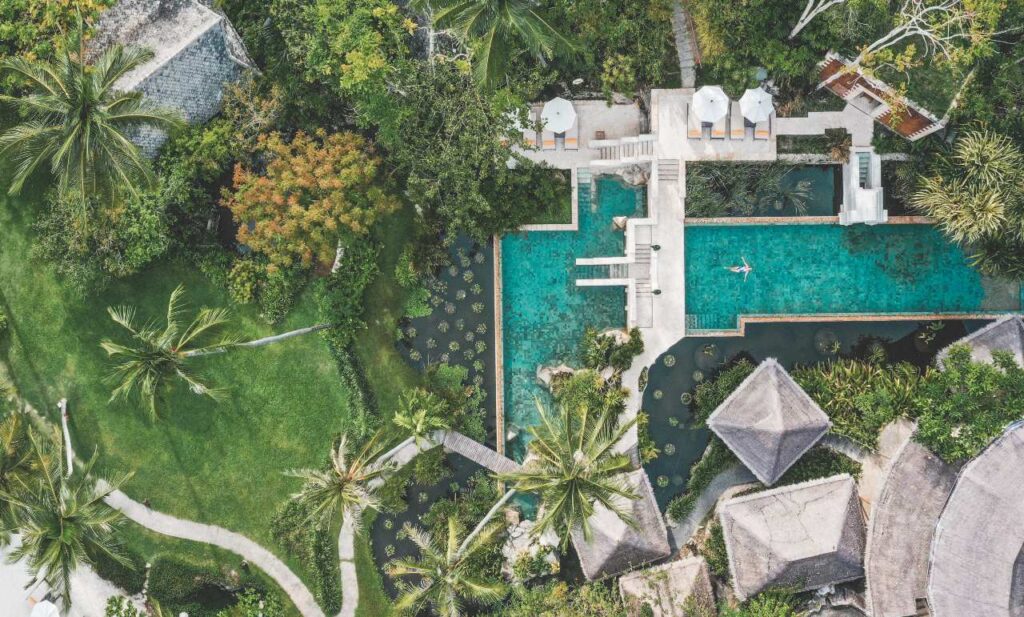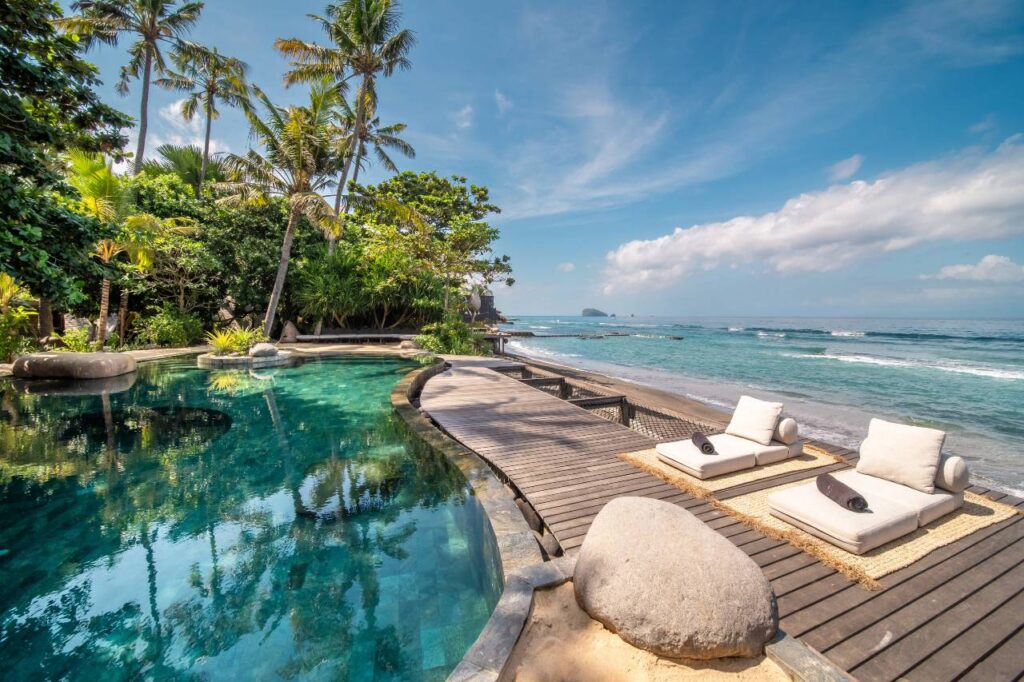This underwater paradise is luxury’s new frontier
Dive deep into the pleasures of Palau.
Words by Ute Junker
Photos supplied
There’s an underwater collision about to happen. Swimming purposefully through the water is a large turtle, which is clearly feeling confident about having the right of way. Moving parallel to the coral-encrusted underwater wall, it is heading straight for my dive buddy, Leo, who is hanging vertically in the water just centimetres from the rock wall.
Leo is an experienced diver and knows that wildlife has the right of way, but is oblivious to the approaching turtle. That’s because he is intently studying the colourful corals covering every inch of the rock wall and the minute lifeforms sheltering among their branches, including tiny shrimp and crabs smaller than your little toenail.
I watch as the turtle draws ever nearer then, without the slightest hesitation, somehow glides through the small gap between Leo and the wall. Leo rears back in surprise but a second later is grinning broadly, entertained by the fact that he’s just been mugged by a turtle.
Welcome to Palau, the last underwater frontier. A collection of more than 340 forest-covered islands scattered across a remote corner of the Pacific Ocean, east of the Philippines and north of Papua New Guinea, Palau is home to some of the best diving in the world. It is also hoping to establish itself as a new destination for luxury travel and while the islands have yet to open a five-star resort, they do have one enticing option for high-end travellers: the Four Seasons Explorer.
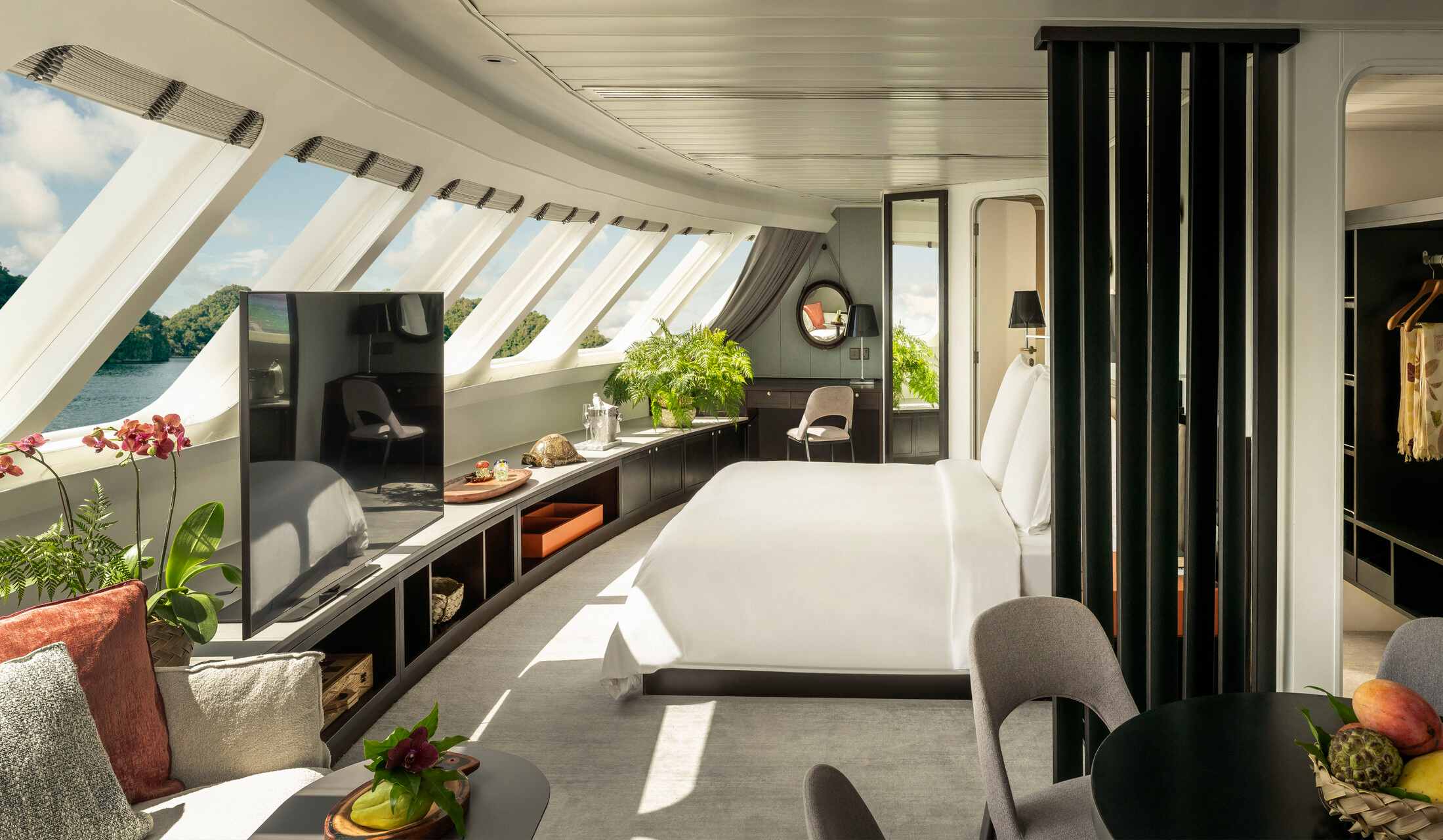
This luxury liveaboard previously offered set diving itineraries in the Maldives, where guests enjoyed the expansive suites with huge windows, the superb food, wine and cocktails, not to mention an on-board spa therapist. Here in Palau, the experience is just as indulgent but it operates by different rules. Just like a hotel, you can check in any day you like, and check out any day you like, thanks to the ship’s tender that comfortably transports you out to the catamaran.
Don’t plan on staying for less than seven days, however. The diving here is so extraordinary that even if, like me, you are only an occasional diver, you will be enthusiastically showing up for three dives a day. If you don’t dive, or don’t want to dive every day, there are plenty of other ways to explore this under-the-radar country, from visiting local villages to kayaking around beautiful bays.
Perhaps Palau’s most famous on-island attraction is a swim in Jellyfish Lake, a marine lake known for the huge number of (non-venomous) golden jellyfish that drift through its waters. Jellyfish Lake is a marine lake, connected to the ocean through the porous limestone in which it sits – essentially, an island of sea surrounded by land. Marine lakes are extraordinary ecosystems, and Palau has the highest concentration of them in the world.
Other excursions include the Badrulchau stone monoliths, at the northern tip of Babeldaob Island, the cave paintings of Ulong Island, and the charming Belau NationaL Museum where you can learn about Palau’s chequered history under various powers including Spain, Germany, Japan and the United States. My favourite activities include a village visit where we are entertained by traditional dances and learn about the beautifully-carved bai meeting houses, made of wood and coral and topped with a thatched roof, and a gourmet forest picnic by a lush waterfall.
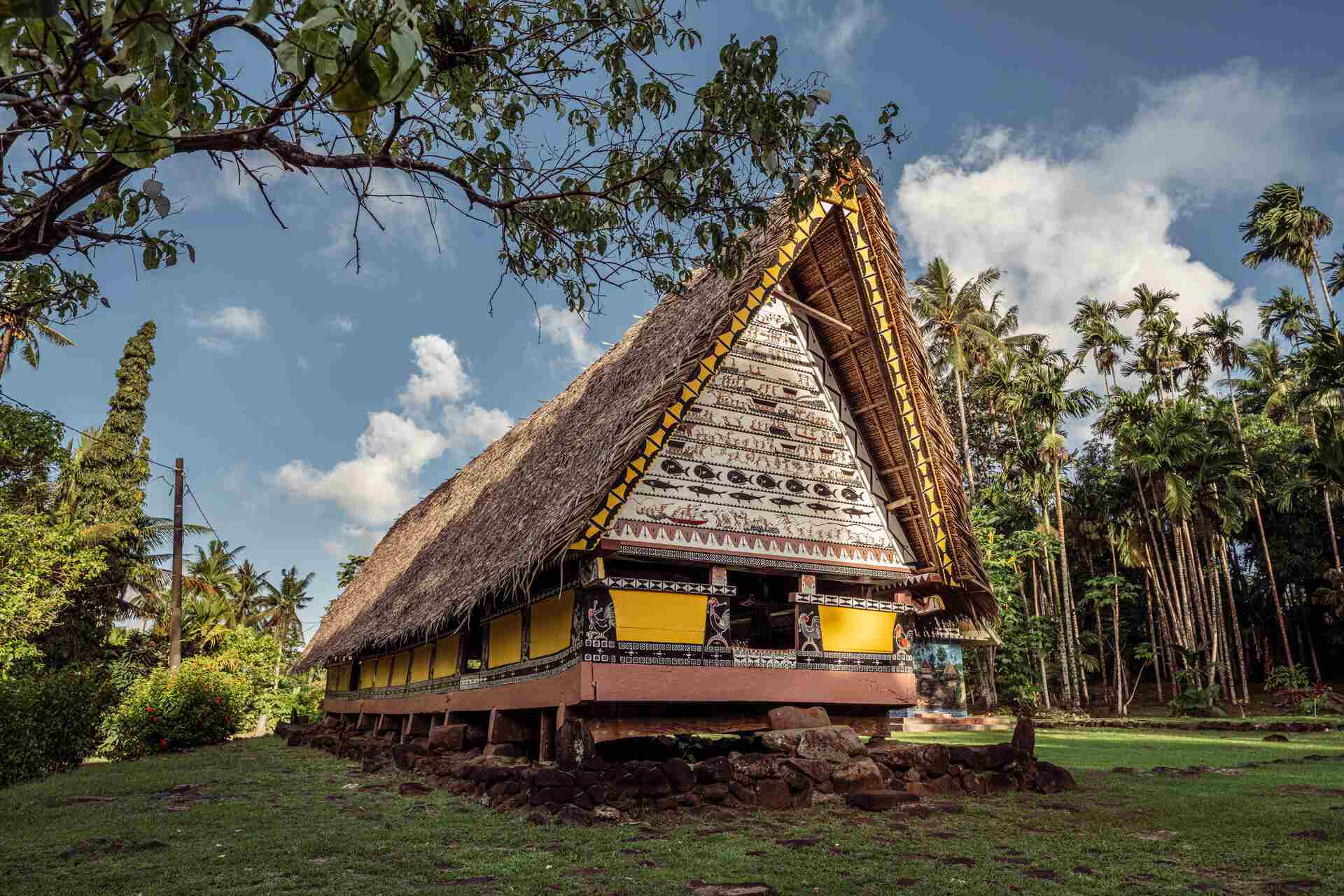
And I do mean gourmet. Meals aboard the Four Seasons Explorer are superb. Seafood is obviously in high rotation, from yellowfin tuna carpaccio to crab tacos and lobster thermidor, but there is plenty of variety – tandoori night proves particularly popular. The beverages, from morning coffees to pre-dinner cocktails, are also superb.
But undoubtedly the number one reason to visit Palau is to explore the underwater world. Palau’s clear waters and thriving coral reefs are home to some sensational marine life. We follow large octopus and cuttlefish as the traverse the reef, marvel at beds of giant clams (seven of the world’s nine species are found here) and gaze in awe as a giant manta ray heads straight for us, wheels around and come back for more, as if knowing that we’re keen to capture the footage. (The Four Seasons dive team includes videographers who put together nightly recaps that are a highlight.)
We tick off plenty of Palau’s most famous dive sites, from Chandelier Cave – where stalactites glitter and corals grow from the ceiling– to German Channel and Blue Corner, famous for huge schools of snapper, barracuda and jacks. Perhaps the most remarkable thing is that at these extraordinary sites, we are the only divers. Only once, as we head toward a site, do we see another tender sitting there – but it turns out the divers have just surfaced, and they head off before we get there.
Palau does not take its natural wonders for granted; it works hard to protect them. Its constitution highlights the importance of “conservation of a beautiful, healthful, and resourceful natural environment”, and the government administers a marine sanctuary that stretches across half a million square kilometres – 80 per cent of the country’s marine territory.
